Making "Bent River" Camembert
|
I spent the entire day, July 12, 2010, with Keith Adams, proprietor and cheese maker at Alemar Cheese Company in Mankato, MN. Keith describes his cheese -- "Bent River" Camembert -- as "organic artisan cheese made in small batches with passionate attention to detail." I had personally eaten his cheese many times before visiting the operation, and I've been impressed with its quality since the very first time -- frankly, I think it competes favorably with many European soft-ripened artisan cheeses, and certainly with those produced in much larger operations. When ripe, the Bent River Camembert flows like very soft butter and has a heavenly taste. The cheese may be purchased in several Twin Cities locations and is also available in a Napa Valley cheese shop, as well as a few other places around the country. You can order directly from the source at the link shown above. Keith and I had corresponded prior to my visit, and we eventually set a date for my visit. I wanted to see the entire operation -- or, at least the first day of a cheese-making sequence -- so I joined him at Cedar Summit Farm, his source for organic whole milk used exclusively in the cheese (the cows are grass-fed, and the milk itself tastes wonderful -- it, too, is available in several Twin Cities groceries). I met Keith at 9:30 that morning. (Photos below are approximately 1/4 the size of those you will see by clicking the image. Full-size images will open on a new page. Close the page to return here.) |
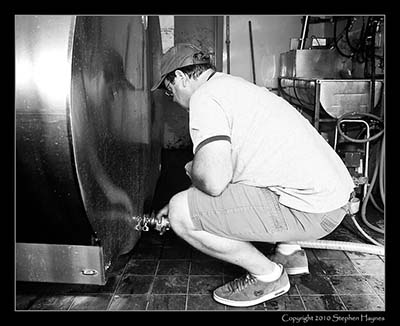 Connect the Hose |
| Keith collects his milk -- a bit over 0.75 tons -- from a morning's milking at Cedar Summit. It has been chilled, but is otherwise unprocessed. He brings a small pump to transfer the milk to his pickup's large insulated tank, seen below. |
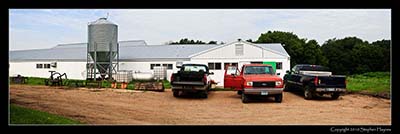 |
| A panoramic view of the Cedar Summit milking shed. |
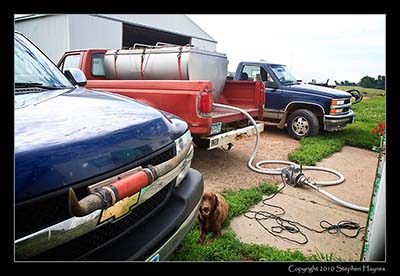 |
| Keith's red pickup with tank, pump at the right on the ground. |
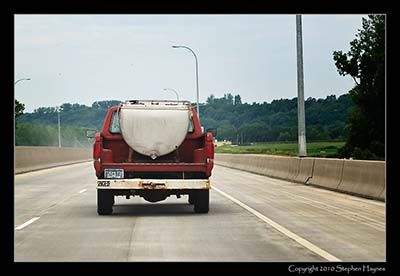 "Got Milk" |
| Transporting the milk from Cedar Summit to his plant, about an hour's drive. Keith takes it easy on curves! |
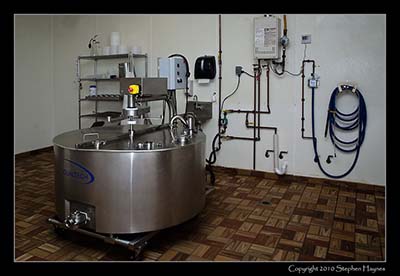 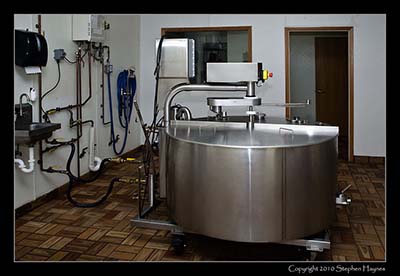 |
| The cheese-making vat before starting. The hose connections are first for hot water to bring the milk up to pasteurizing temperature, and then for cold water to cool it down, both done gently. |
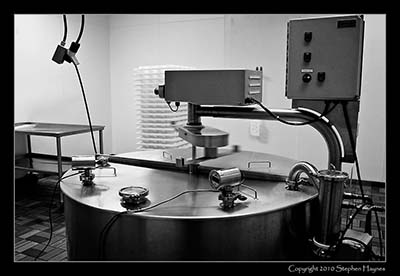 |
| Gently stirring while pasteurizing. |
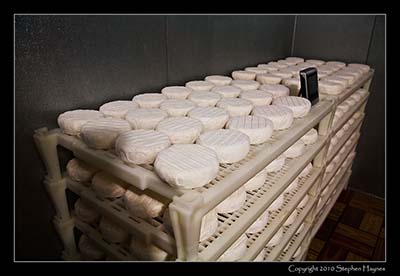  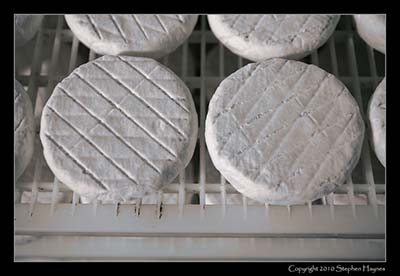 |
| Cheese rounds aging in the cooler. |
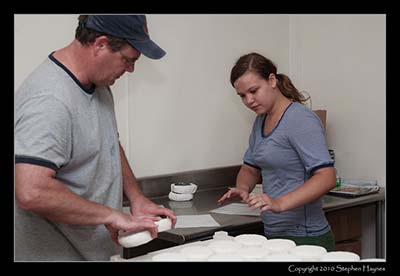 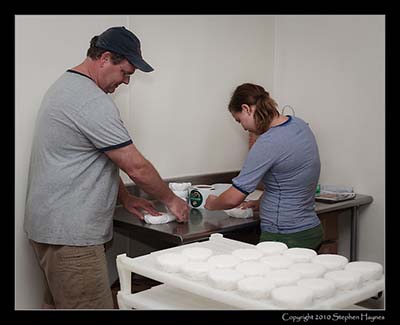 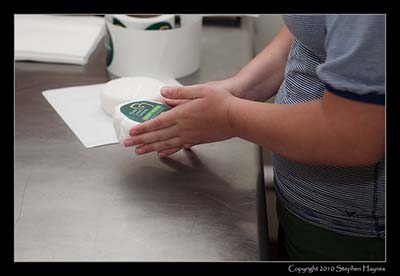 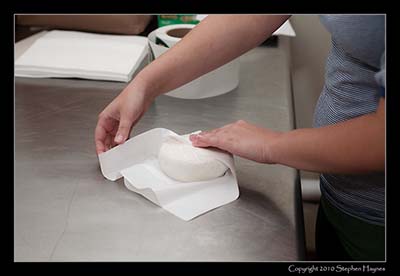 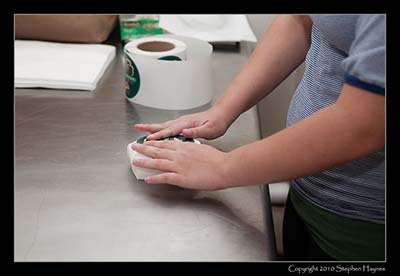 |
| Father and daughter wrapping. (The company's name -- Alemar -- is an amalgam of Keith's daughters' names.) |
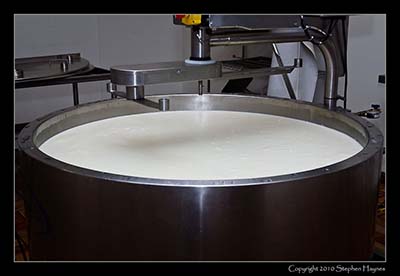 |
| The milk has finished pasteurization. |
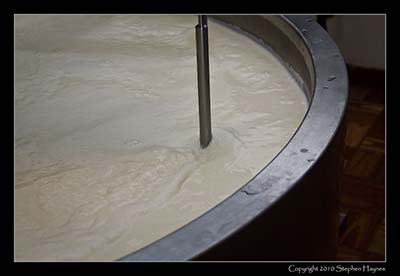 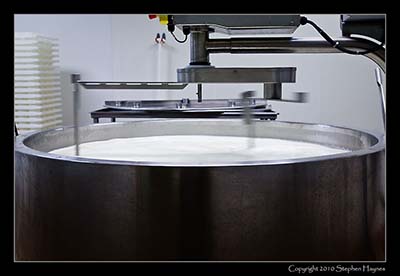 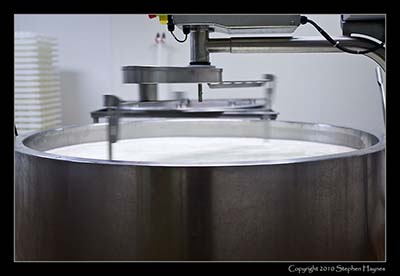 |
| More gentle stirring as the milk cools. |
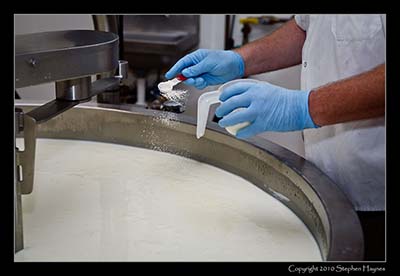 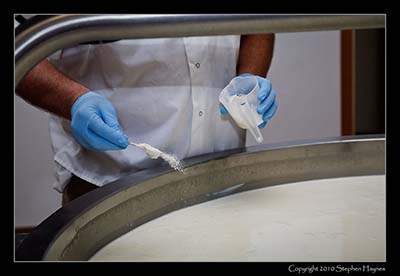 |
| Adding cultures and enzymes, which give the cheese its unique flavor. |
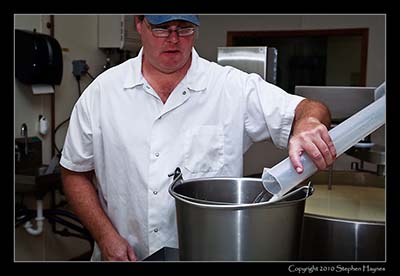 |
| Mixing the vegetable-based rennet, which causes the curds to set and separate from the whey. |
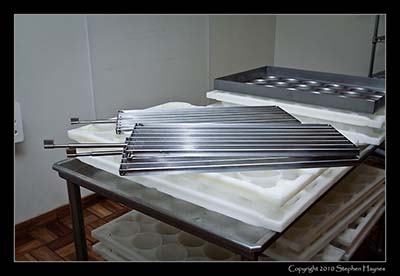 |
| Knives that will be used to cut up the curds. |
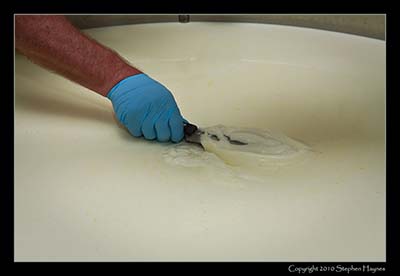 |
| Doing a test cut on the curds. If the curds divide cleanly, they are ready. |
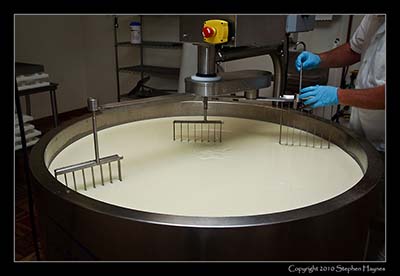 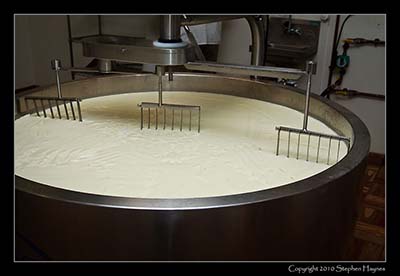 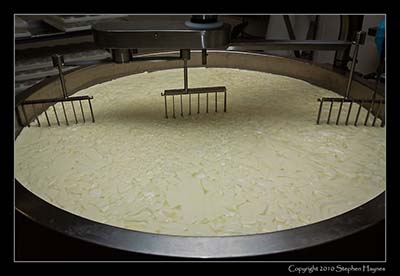 |
| The knives are rotated through the vat, cutting the curds and releasing the whey. |
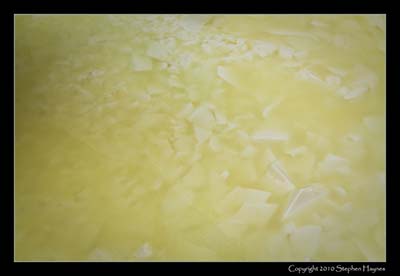 Curds and Whey |
| What it looks like before letting the curds settle. |
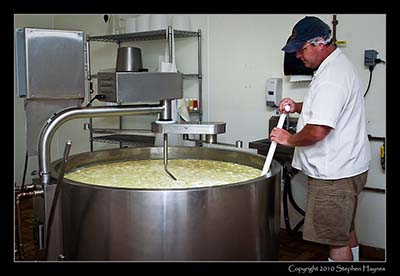 |
| A final touch by hand. |
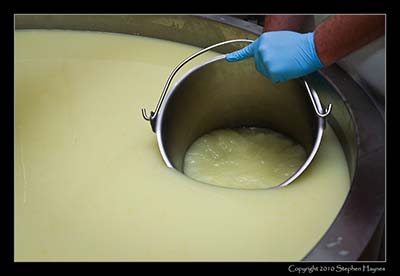 |
| Skimming off the whey. |
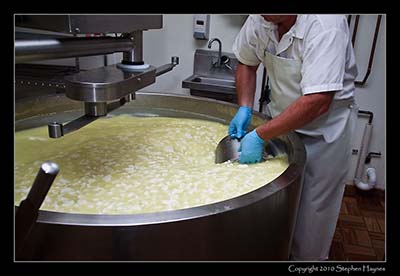 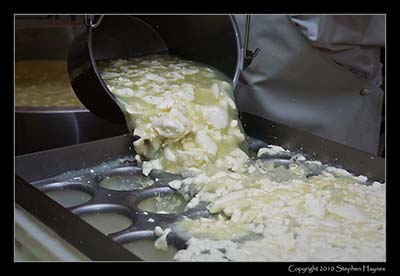 |
| Filling the molds by the bucket full. |
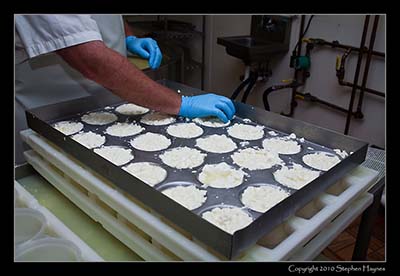 |
| Keith makes the final distribution by hand. |
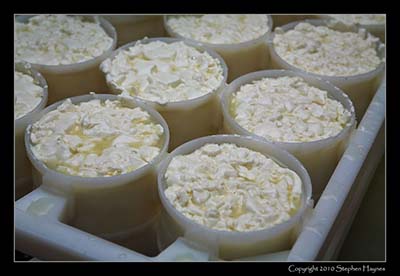 |
| Full molds. The whey drains through slots in the molds and the curds settle overnight until they are compacted in the bottom of the molds. |
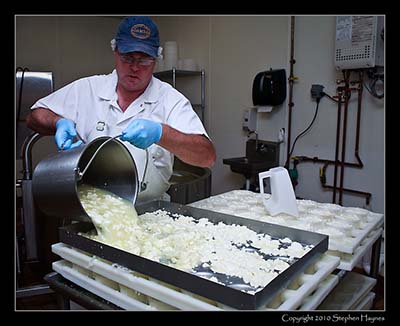 |
| Still filling molds. |
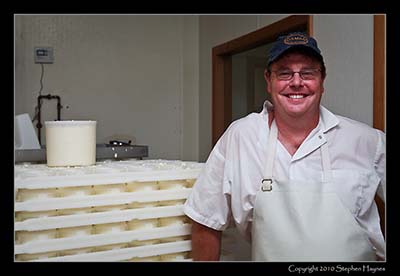 A Happy Man and His Product |
| Finished about six p.m., and Keith will be in again early the next morning to finish the rounds. |